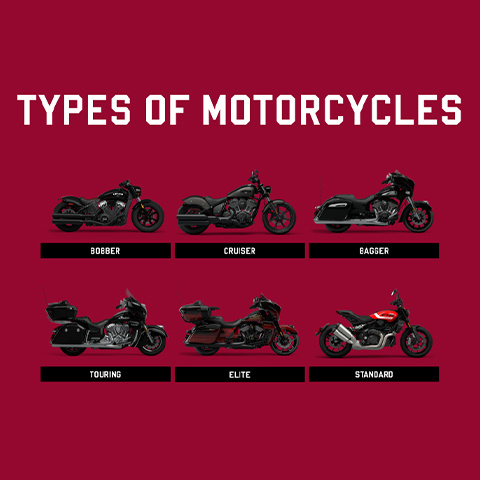Motorcycle Boots Fundamentals Explained
Motorcycle Boots Fundamentals Explained
Blog Article
Some Known Facts About Motorcycle Boots.
Table of ContentsExamine This Report about Motorcycle BootsThe Of Motorcycle BootsMore About Motorcycle BootsWhat Does Motorcycle Boots Do?Unknown Facts About Motorcycle BootsThe Buzz on Motorcycle Boots
The key parts of contemporary bikes are presented listed below.; this has been made use of all via motorbike history but is now coming to be a lot more usual.It was extensively unpopular and normally related to as a negative idea at the time. It has considering that obtained some prestige in the modern-day custom bike world as well since of the room financial savings it can manage and the reference to an earlier era.
Any storage tank for fuel might be so called, the term is generally applied to part of an engine system in which the fuel is kept and driven (gas pump) or launched (pressurized gas) right into an engine. A motorbike fork is the part of a motorbike that holds the front wheel and enables one to steer.
Examine This Report about Motorcycle Boots
The 'fork' on a motorbike is composed of several parts. The three-way trees (also understood as yokes) hold the fork tubes (which include the fork springs), and are fastened to the neck of the structure by the guiding stem.

Motorbikes have mostly, yet not solely, been created with one to four cyndrical tubes, and developers have attempted basically every conceivable format. One of the most usual engine configurations today are the single and twin, the V-twin, the opposed double (or boxer), and the in-line three-way and in-line 4. A number of others layouts have actually gotten to automation, consisting of the V-4, the level 6-cylinder, the level 4-cylinder, the in-line 6-cylinder, and the Wankel engine.
The 4-Minute Rule for Motorcycle Boots
Chain-drive uses sprockets and a roller chain, which needs both lubrication and adjustment for elongation (stretch) that happens with wear. The lubricating substance is subject to being shaken off the fast-moving chain and leads to gunk and dust accumulation. Chains do deteriorate, and excessive wear on the front and back gears can be unsafe.
Standard roller chain-drives suffer the potential for resonance, as the reliable distance of activity in a chain and gear mix constantly alters during the transformation ("chordal action"). If a drive sprocket rotates at constant RPM, after that the chain (and the driven gear) has Resources to increase and slow down regularly. Most chain-driven motorcycles are fitted with a rubber bushed rear wheel center to eliminate this vibration problem.
These chain oilers vary in class, however all add considerably to the life of the chain. The customized of lubing by immersing the chain in a tin of warm oil stopped in the early 1970s, once most chains had rubber "O'-rings. The initial Suzuki RE5 of 1975 featured a rear chain oiler, but the 1976 version had a closed chain, and its oiler was erased as "unneeded".
Indicators on Motorcycle Boots You Need To Know
They are not as sturdy when subjected to high horsepower as a chain. You can not alter the size and adjustment final drive ratios as quickly as chains. And call for bigger pulleys compared to chain gears to obtain a reliable final drive ratio.
A shaft-drive is generally completely enclosed; the visual hint is a tube expanding from the back of the transmission to a bell housing on the rear wheel. Inside the bell housing a Our site bevel equipment on the shaft friends with another on the wheel mount. This plan is exceptional in regards to sound and sanitation and is virtually maintenance-free, with the exception of occasional fluid adjustments.
The extra gear sets are a resource of power loss and included weight. Practically all high-performance racing bikes make use of chain-drive since they are the most mechanically effective transmitting power to the back wheel.

Motorcycle Boots for Dummies
The most important attribute of any tire is the call patch, the tiny area that touches with the road surface area while riding. There are tires developed for motorcycle, touring, sport and cruiser bikes. Dust bike tires have knobbly, deep treads for optimum grip on loose dust, mud, or gravel; such tires often tend to be less steady and noisier on smooth surfaces.
Exploring tires are usually made from a harder rubber substance for better toughness, these might last longer however often tend to supply much less outright hold contrasted to sporting activities tires at optimal operating temperatures. Visiting tires typically provide a lot more grasp at lower temperatures and can be much more fit to riding in cool or winter conditions where a sport tire might never ever reach its optimum operating temperature level.
These tend to have stronger sidewalls as they are usually fitted to larger equipments. Motorsport or competing tires offer the highest of levels of grip. Because of the heats at which these tires commonly run, make use of outside an auto racing environment is unsafe, usually these tires do not reach their optimal temperature level discover this info here which supplies less than ideal hold.
Motorcycle Boots Can Be Fun For Anyone

This can result in brake dive. Brakes can either be drum or disc based, with disc brakes being more common on huge, modern-day or a lot more costly motorbikes for their far superior quiting power, specifically in wet conditions. There are many brake-performance-enhancing aftermarket components offered for a lot of motorcycles, including brake pads of differing substances and steel-braided brake lines.
Report this page